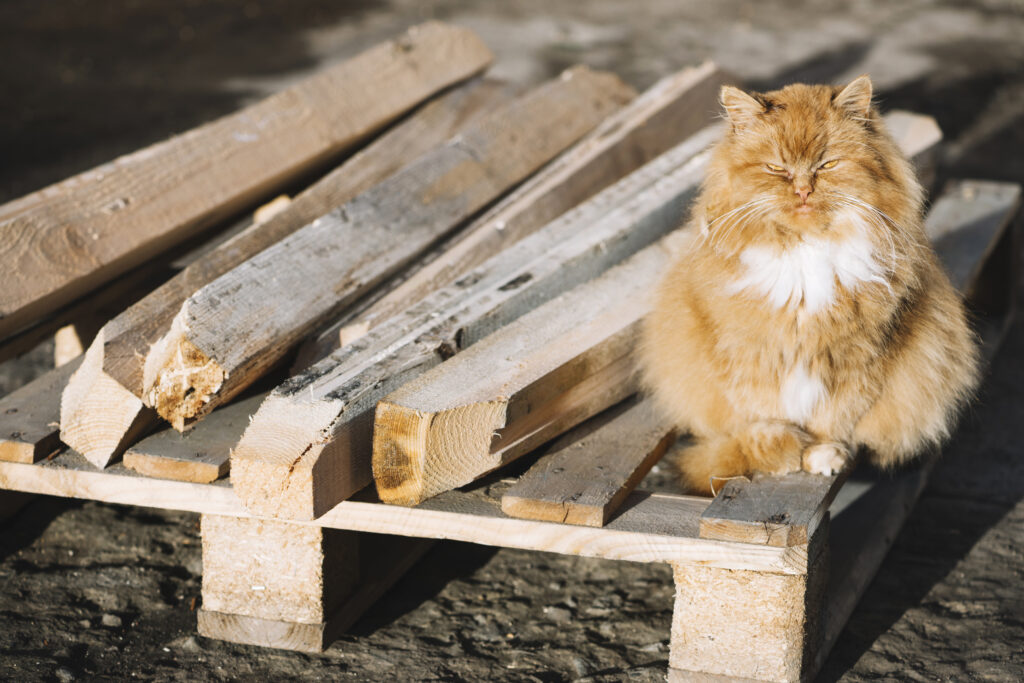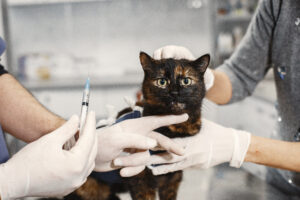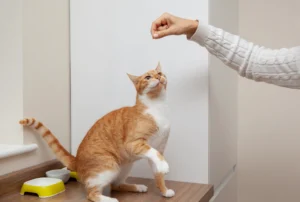Introduction: Understanding the Truth About Barn Cat Adoption
Barn cat adoption has become increasingly popular across the United States as a humane solution for cats that prefer outdoor living. Whether you’re looking to adopt a barn cat for rodent control on your property or provide a safe home for feral cats, understanding the realities behind barn cat adoption is crucial. Unfortunately, several persistent myths can put both cats and adopters at risk when not properly addressed.
As barn cat programs and working cat adoptions gain traction nationwide, it’s important to separate fact from fiction. This comprehensive guide will debunk five dangerous myths about barn cat adoption while providing you with accurate information to make informed decisions when considering barn cats for your property.

What Exactly Is a Barn Cat?
Before diving into common misconceptions, let’s clarify what we mean by “barn cat.” A barn cat is typically a feral or semi-feral cat that lives primarily outdoors and provides natural pest control. Barn cat adoption programs specialize in placing these cats in suitable outdoor environments where they can thrive while performing valuable services.
These cats may not be suitable as indoor pets due to their independent nature or lack of socialization with humans. Through barn cat adoption, these cats receive a chance at a productive life rather than facing euthanasia in overcrowded shelters. Working cat adoption programs across the country have saved countless feline lives while helping property owners manage rodent populations naturally.
Now, let’s address the five most dangerous myths about barn cat adoption that could put both you and your potential feline workers at risk.
Myth #1: “Any Cat Can Be a Successful Barn Cat”
One of the most pervasive and risky myths surrounding barn cat adoption is that any cat can simply be relocated to a barn environment and thrive. This misconception puts cats in danger and often leads to disappointing outcomes for adopters.
The Reality About Barn Cat Temperament
Not all cats are suited for barn cat adoption. The most successful barn cats typically fall into specific categories:
- Feral barn cats: These cats have had minimal human contact and prefer to avoid people entirely. When considering feral barn cats for adoption, understand they will likely never become lap cats.
- Semi-feral cats: These may tolerate human presence from a distance but aren’t interested in being handled. Many barn cat rescue organizations specialize in placing these cats.
- Former pet cats with strong outdoor preferences: Some domestic cats simply prefer outdoor living despite socialization efforts.
According to the ASPCA, attempting to place a friendly, socialized cat in a barn cat adoption situation can cause significant stress and psychological harm to the animal. These cats often seek human companionship and may wander in search of it, putting themselves in danger.
“Proper candidate selection is critical for successful barn cat adoption. The right cat in the right environment benefits everyone involved,” notes Dr. Margaret Wilson, veterinary consultant for several barn cat programs nationwide.
When you adopt a barn cat, working with organizations specializing in barn cat rescue or a dedicated barn cat program ensures you’re matched with cats suited for this lifestyle. Free barn cats for adoption through specialized programs have usually been assessed for their suitability for outdoor living.
Myth #2: “Barn Cats Require No Care or Attention”

Another dangerous myth is that barn cat adoption means “set it and forget it” — that these cats require zero maintenance once placed on your property.
The True Care Requirements for Barn Cats
When you adopt a barn cat or participate in working cat adoption, you’re still making a commitment to provide certain essentials:
- Consistent food and fresh water: Even the best mousers need supplemental nutrition. Relying solely on hunting can lead to malnourishment.
- Basic shelter: Barn cats need protection from extreme weather, predators, and a safe place to rest. This doesn’t need to be elaborate — a dedicated corner of your barn with insulated shelter boxes works well.
- Basic veterinary care: Barn cat adoption responsibilities include providing preventative healthcare. Many barn cat rescue organizations ensure cats are spayed/neutered, vaccinated, and treated for parasites before adoption, but ongoing care remains the adopter’s responsibility.
- Monitoring: Regular observation ensures your barn cats remain healthy and allows you to catch problems early.
The American Veterinary Medical Association emphasizes that outdoor cats, including those adopted through barn cat adoption, still require regular care to maintain health and prevent disease spread.
When adopting feral cats for barns, remember they’re still domestic animals, not wildlife. The notion that they can completely fend for themselves is a dangerous misconception that leads to suffering and shortened lifespans.
Myth #3: “Relocating Barn Cats Is Simple and Straightforward”
Many people underestimate the complexity involved when rehoming feral cats in barns or other outdoor environments. This myth leads to many failed barn cat adoption attempts.
The Proper Barn Cat Relocation Process
Successful barn cat relocation requires a methodical approach:
- Confinement period: Newly adopted barn cats must be confined in their new location for 3-4 weeks minimum. This essential step helps them recognize the new location as “home.”
- Proper confinement setup: This typically involves large dog crates or a small room in the barn with litter, food, water, and hiding places.
- Gradual introduction: After the confinement period, cats should be released in the evening and continued to be fed in the same location.
According to statistics from barn cat programs across the US, barn cats released without a proper confinement period have only a 30-50% chance of remaining at their new location, compared to over 85% success rate when proper protocols are followed.
The barn cat adoption process isn’t simply opening a carrier and letting cats loose on your property. Organizations specializing in working cats for hire or barn cat adoption near me can provide detailed guidance for your specific situation.
As Julie Martinez, director of a prominent barn cat rescue in Texas explains, “Proper relocation techniques are the difference between success and heartbreak in barn cat adoption. When done correctly, these cats will bond to their new territory and provide years of rodent control.”
Myth #4: “All Barn Cats Are the Same”
The assumption that all cats available through barn cat adoption are identical in temperament, abilities, and needs creates unrealistic expectations and poor matches.
The Diverse Spectrum of Barn Cats
Barn cat adoption actually encompasses a wide range of cats:
- Working cats: Specifically placed for rodent control, these cats have demonstrated hunting abilities. Working cat adoption programs often assess cats’ hunting instincts.
- Community cats: Some barn cat adoption candidates are simply seeking outdoor homes with minimal human interaction but may not be active hunters.
- Special needs outdoor cats: Some barn cat programs include cats with minor medical issues that make them unsuitable for traditional adoption but can thrive in the right outdoor setting.
- Semi-socialized cats: These cats may allow limited handling and interaction while still preferring an outdoor lifestyle.
When you’re looking to find barn cats for adoption, communicate clearly about your specific needs and environment. Do you need dedicated hunters for serious rodent problems? Or are you primarily offering sanctuary to cats that need outdoor homes?
Barn cat adoption near me searches can connect you with local organizations that understand regional challenges like weather patterns and predator concerns specific to your area.
The Humane Society reports that matching the right type of cat to the right environment increases retention rates by over 70%. This is why reputable barn cat shelter and rescue operations typically have an application and assessment process rather than simply giving away free barn cats for adoption.
Myth #5: “Barn Cats Always Stay Where They’re Placed”
The belief that barn cats will automatically stay where they’re relocated underlies many failed adoption attempts and can endanger cats.
Understanding Barn Cat Territory Behavior
Even with proper introduction techniques, barn cat behavior follows certain patterns:
- Territory range: Barn cats may range quite far from their home base, sometimes up to a mile or more, especially when first exploring their new territory.
- Environmental factors: Threats from predators, harassment from other animals, or lack of resources can drive barn cats away from their intended location.
- Seasonal changes: Behavior and territory patterns may shift with seasons, particularly during mating seasons if cats aren’t spayed/neutered.
Research from feral cat behavior specialists indicates that barn cat adoption success rates improve dramatically when:
- Multiple cats are placed together (ideally pairs or small groups that already know each other)
- The property has few or no existing cats to create territorial conflicts
- Regular feeding schedules establish predictable routines
The trap-neuter-return barn cats approach combines with barn cat adoption to create sustainable populations. When considering barn cat adoption near me options, look for programs that offer guidance on territory establishment and management.
As experienced barn cat adopter Michael Chen notes, “Our barn cats definitely have their own schedules and territories, but by providing consistent care in the same location every day, they’ve made our property their central home base. They may roam, but they always come back.”
The Truth About Barn Cat Adoption Benefits
Now that we’ve addressed the myths, let’s examine the genuine benefits of successful barn cat adoption:
Ethical Solution for Feral Cats
Barn cat adoption provides a humane alternative for cats that aren’t candidates for traditional indoor homes. Without outdoor cat adoption programs, many of these cats would face euthanasia in shelters. When you adopt a barn cat, you’re providing a life-saving opportunity.
Many barn cat rescue organizations operate as part of larger trap-neuter-return programs, ensuring populations remain controlled while providing care for cats that cannot be socialized as indoor pets.
Effective Pest Control
Professional exterminators frequently charge hundreds or even thousands of dollars for ongoing rodent control, often using chemicals that pose risks to other animals and the environment. Barn cat adoption offers a natural, sustainable solution.
A study by the University of Nebraska found that properties with established barn cats saw rodent populations decrease by 40-75% within six months. This makes working cats for hire through adoption programs an economically and environmentally sound choice for many properties.
Community Building
The barn cat shelter community connects rural and agricultural communities with animal welfare efforts that benefit everyone. Many who adopt a barn cat become advocates for humane treatment of outdoor cats and support spay/neuter efforts in their communities.
How to Successfully Adopt a Barn Cat: Best Practices
If you’re considering barn cat adoption, here are key steps for success:
1. Find Reputable Sources for Barn Cat Adoption
Look for established barn cat programs or rescue organizations specializing in outdoor cat placement. These include:
- Local animal shelters with working cat or barn cat programs
- Trap-neuter-return organizations that offer barn cat adoption
- Dedicated barn cat rescue groups
Avoid taking in random strays or accepting free barn cats for adoption from unverified sources, as these cats may not be veterinarian-checked, spayed/neutered, or assessed for barn cat suitability.
2. Prepare Your Property Before Barn Cat Adoption
Before bringing home barn cats:
- Identify and secure a proper confinement area for the acclimation period
- Set up weather-proof, predator-resistant shelters
- Establish feeding stations away from roads or danger areas
- Ensure outbuildings don’t contain harmful chemicals or dangerous equipment
3. Commit to the Full Barn Cat Adoption Process
Successful adoption requires:
- Following the complete confinement protocol (typically 3-4 weeks)
- Maintaining regular feeding schedules even after cats are released
- Being patient as cats adjust to new surroundings
- Providing appropriate veterinary care as needed
4. Consider Adopting Multiple Barn Cats
Most barn cat adoption programs recommend adopting at least two cats together. Benefits include:
- Increased likelihood of cats staying on the property
- Social companionship for the cats
- Better rodent control coverage
- Increased safety through buddy system
Barn Cat Adoption Resources Across the United States
Numerous organizations specialize in connecting working cats with appropriate outdoor homes. Here are some notable programs:
- Barn Cat Program at Alley Cat Allies: Provides nationwide resources and connects adopters with local programs
- Working Cats Program at Best Friends Animal Society: Offers guidelines and success stories for barn cat adoption
- Community Cats Project by ASPCA: Resources for barn cat management and adoption
Check out our other related articles at PetsPump for more information on outdoor cat care and cat behavior.
Understanding Barn Cat Adoption Costs and Requirements
While some organizations offer free barn cats for adoption, most have nominal fees that cover:
- Spay/neuter surgery
- Vaccinations
- Testing for feline diseases
- Microchipping
- Administrative costs
Typical barn cat adoption costs range from $0-75 per cat, significantly less than the veterinary services included.
Barn cat adoption requirements typically include:
- Proof of property ownership or landlord permission
- Safe distance from busy roads
- Commitment to the acclimation process
- Ability to provide ongoing care
- Appropriate shelter from weather extremes
The Role of Trap-Neuter-Return in Barn Cat Adoption
Many barn cat adoption programs are connected to broader Trap-Neuter-Return (TNR) efforts. TNR programs humanely trap feral cats, provide spay/neuter surgery and vaccination, and return them to their original territory when possible. When original territories become unsafe or unavailable, barn cat adoption provides an alternative.
Understanding the connection between TNR and barn cat adoption helps you appreciate the broader community benefit of these programs. By adopting barn cats, you’re supporting humane population control while gaining natural pest management.
Special Considerations for Different Properties
Barn cat adoption needs vary based on your specific situation:
Farm and Rural Barn Cat Adoption
Traditional farms benefit from barn cat adoption with considerations for:
- Livestock interactions
- Large territory management
- Predator awareness
Suburban Working Cat Adoption
Suburban properties may adopt barn cats with attention to:
- Neighbor awareness and education
- Smaller territory boundaries
- Higher risk of human interference
Warehouse and Commercial Barn Cat Adoption
Businesses adopting working cats should consider:
- Staff education about barn cat protocols
- Securing the facility against escapes
- Consistency in care despite changing personnel
Conclusion: The Responsible Path to Barn Cat Adoption
Barn cat adoption represents a compassionate, practical solution for both property owners seeking natural pest control and cats unsuited to indoor living. By understanding and avoiding the five dangerous myths we’ve explored, you can create a successful environment for barn cats while enjoying their many benefits.
Remember that successful barn cat adoption requires proper preparation, patience during the relocation process, and ongoing commitment to basic care. These cats may be independent, but they still rely on human stewards for their well-being.
If you’re considering barn cat adoption, take time to connect with reputable programs, prepare your property thoroughly, and commit to the full relocation process. The reward will be a sustainable, mutually beneficial relationship that can last for many years.
For more information on cat adoption and care, visit our other articles at PetsPump including caring for senior cats, cat nutrition guides, and litter box training tips.
FAQs About Barn Cat Adoption
Q: How long does it take for barn cats to adjust to their new home? A: After the 3-4 week confinement period, most barn cats take an additional 2-3 months to fully settle into their territory and routines. Some may adjust faster, while others may take longer depending on temperament and previous experiences.
Q: How many barn cats do I need for effective rodent control? A: This depends on your property size and rodent population. As a general guideline, most barn cat adoption counselors recommend 2-3 cats for an average barn or small farm. Larger properties may benefit from more, placed strategically throughout the area.
Q: Can barn cats coexist with other farm animals? A: Yes, in most cases barn cats can safely coexist with livestock and poultry. Initial supervision is recommended, particularly with curious animals like goats or dogs that might chase the cats during the adjustment period.
Q: What should I feed barn cats? A: Quality dry cat food provides a consistent nutritional base. Many successful barn cat adopters feed once or twice daily at regular times. Contrary to popular belief, feeding barn cats does not reduce their hunting behavior but ensures they remain healthy and territorial.
Q: How can I find barn cats for adoption near me? A: Contact local animal shelters, search for barn cat programs in your area, reach out to rural veterinarians, or connect with farm animal sanctuaries. Many organizations maintain waiting lists for barn cat adoption due to high demand.
Remember that barn cat adoption is both a commitment to the cats and an investment in natural, sustainable pest control for your property. When done right, it’s a rewarding experience that benefits everyone involved.






